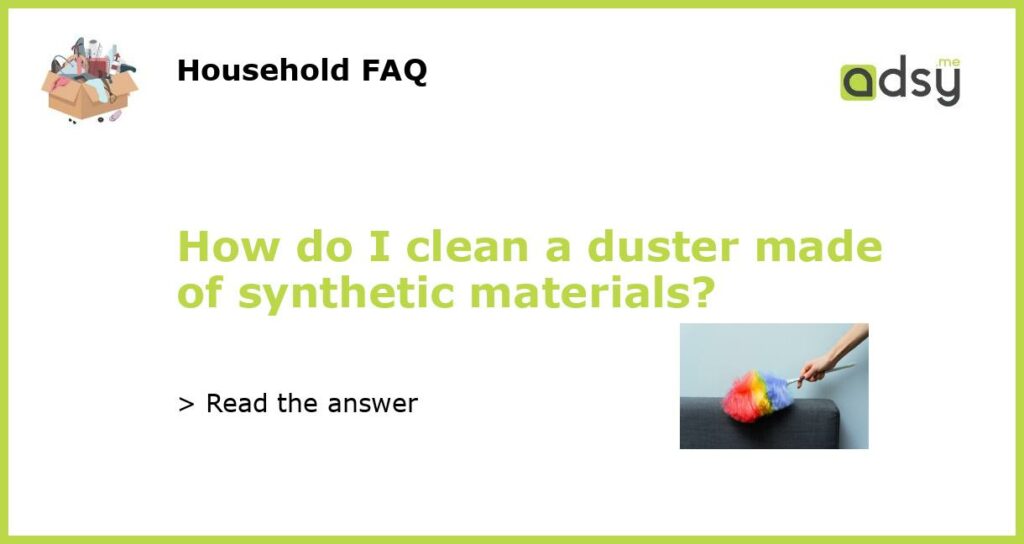Understanding Dusters Made of Synthetic Materials
Before diving into how to clean a synthetic duster, it’s important to understand the nature of these types of dusters. Synthetic dusters are typically made from materials like microfiber, polyester, or nylon. These materials are great for trapping dust and dirt, but they can also be easily damaged if not cleaned properly.
The Dos and Don’ts of Cleaning Synthetic Dusters
When it comes to cleaning a synthetic duster, there are some dos and don’ts to keep in mind. The first and most important rule is to avoid using any harsh chemicals or bleach, as this can damage the fibers of the duster. Instead, opt for a gentle, fragrance-free detergent and warm water to clean your duster.
Additionally, never put your synthetic duster in the dryer – this can cause it to shrink or melt. Instead, hang it up to air dry. And finally, don’t forget to regularly wash your synthetic duster to prevent the buildup of dirt and dust that can reduce its effectiveness.
Steps to Clean a Synthetic Duster
To clean your synthetic duster, follow these simple steps:
- Shake out any loose dirt or dust from the duster.
- Fill a sink or basin with warm water and add a small amount of gentle detergent.
- Swirl the duster around in the water, gently scrubbing any areas with stubborn dirt or stains.
- Rinse the duster thoroughly with cool water until all soap suds are gone.
- Hang the duster up to air dry completely before using again.
Tips for Extending the Life of Your Synthetic Duster
To get the most out of your synthetic duster, there are a few things you can do to extend its life:
- Avoid using fabric softener, as this can damage the fibers of the duster.
- Store your duster in a dry place to prevent mildew or mold growth.
- Don’t expose your duster to extreme heat, such as the sun or a hot car, as this can cause it to melt or shrink.
- Consider investing in multiple dusters so you can rotate them and use each one less frequently, which can help them last longer.
Cleaning a synthetic duster doesn’t have to be complicated, but it’s important to follow some basic rules to ensure that you don’t damage the delicate fibers of the duster. By using a gentle detergent, avoiding heat, and regularly washing your duster, you can keep it in good condition and get the most out of its dust and dirt-trapping capabilities.






